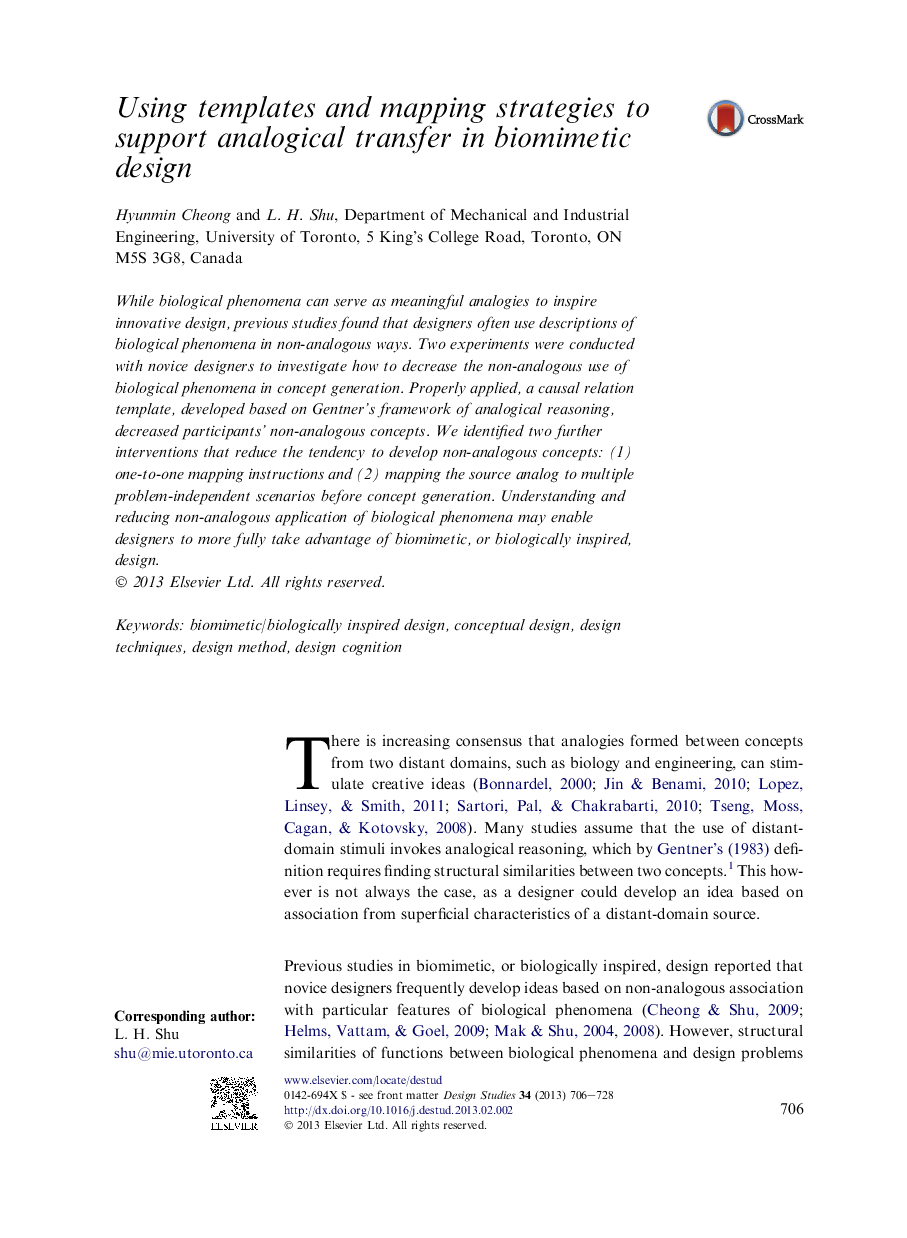| Article ID | Journal | Published Year | Pages | File Type |
|---|---|---|---|---|
| 261549 | Design Studies | 2013 | 23 Pages |
While biological phenomena can serve as meaningful analogies to inspire innovative design, previous studies found that designers often use descriptions of biological phenomena in non-analogous ways. Two experiments were conducted with novice designers to investigate how to decrease the non-analogous use of biological phenomena in concept generation. Properly applied, a causal relation template, developed based on Gentner's framework of analogical reasoning, decreased participants' non-analogous concepts. We identified two further interventions that reduce the tendency to develop non-analogous concepts: (1) one-to-one mapping instructions and (2) mapping the source analog to multiple problem-independent scenarios before concept generation. Understanding and reducing non-analogous application of biological phenomena may enable designers to more fully take advantage of biomimetic, or biologically inspired, design.
► A causal relation template was developed to identify biological analogies from text. ► Used correctly, the template helped novice designers develop analogous concepts. ► One-to-one mapping instructions for the template reduced non-analogous concepts. ► Problem-independent scenario mapping also reduced non-analogous concepts.
